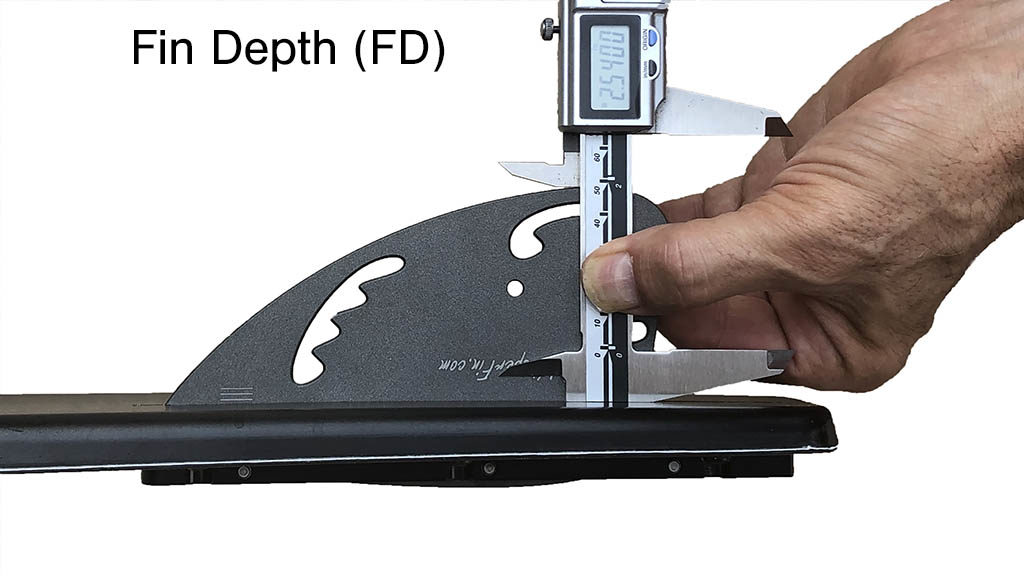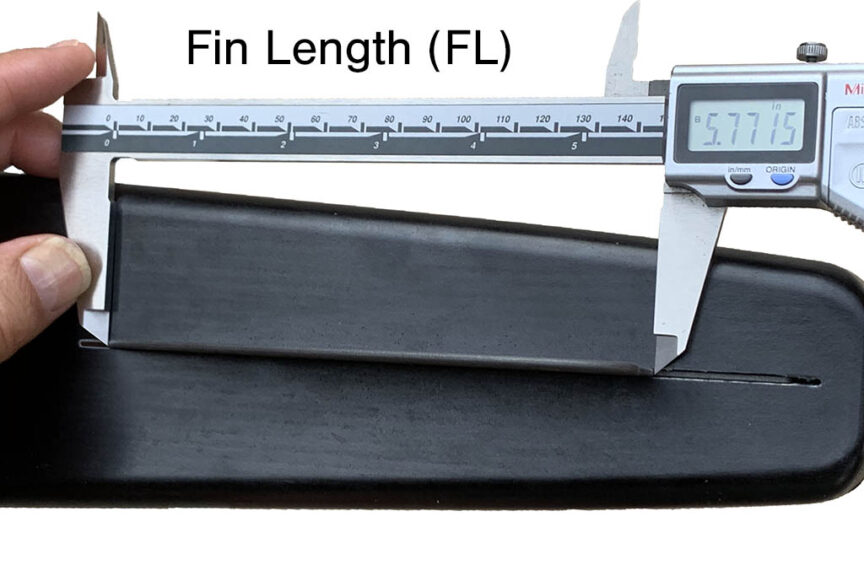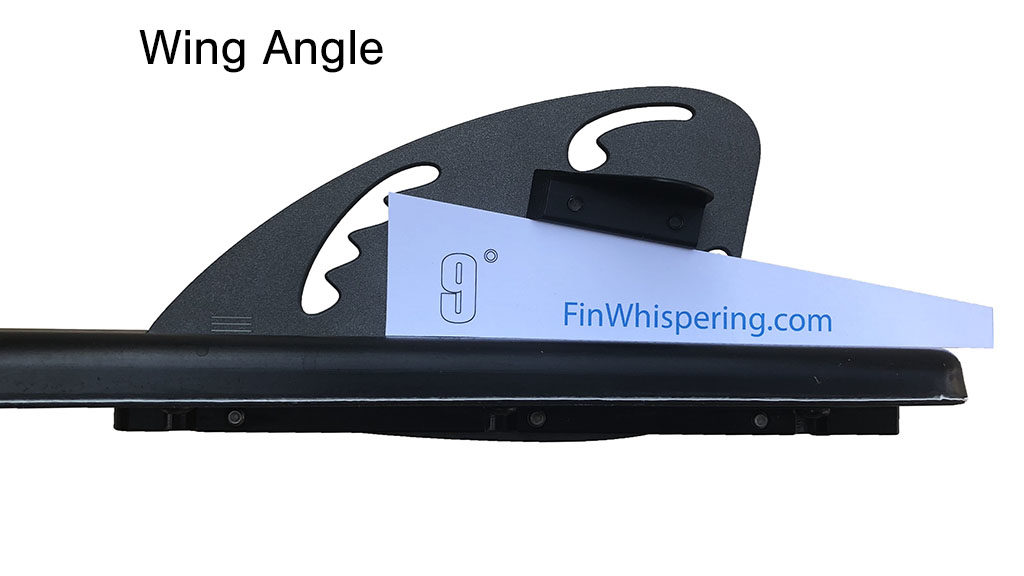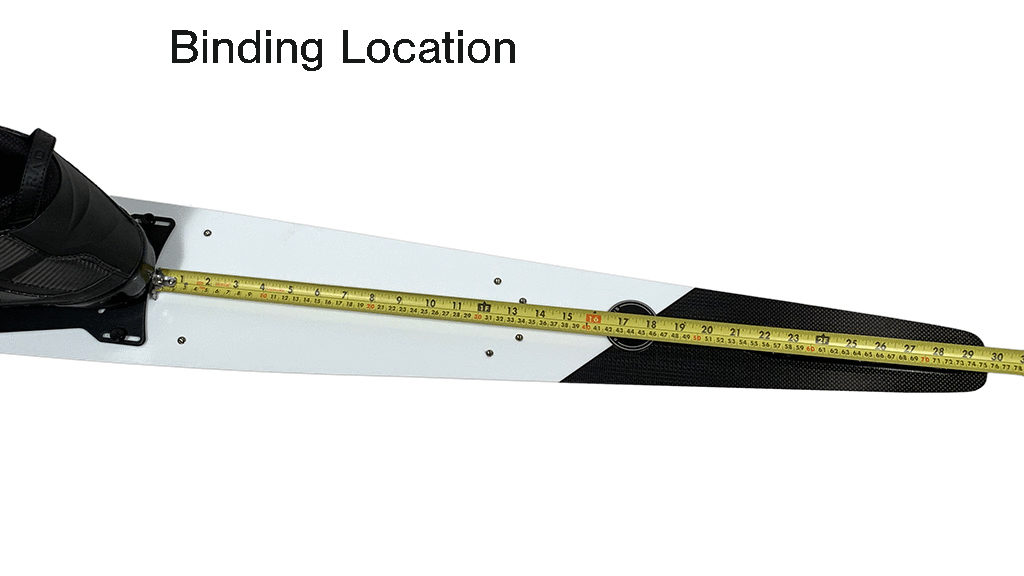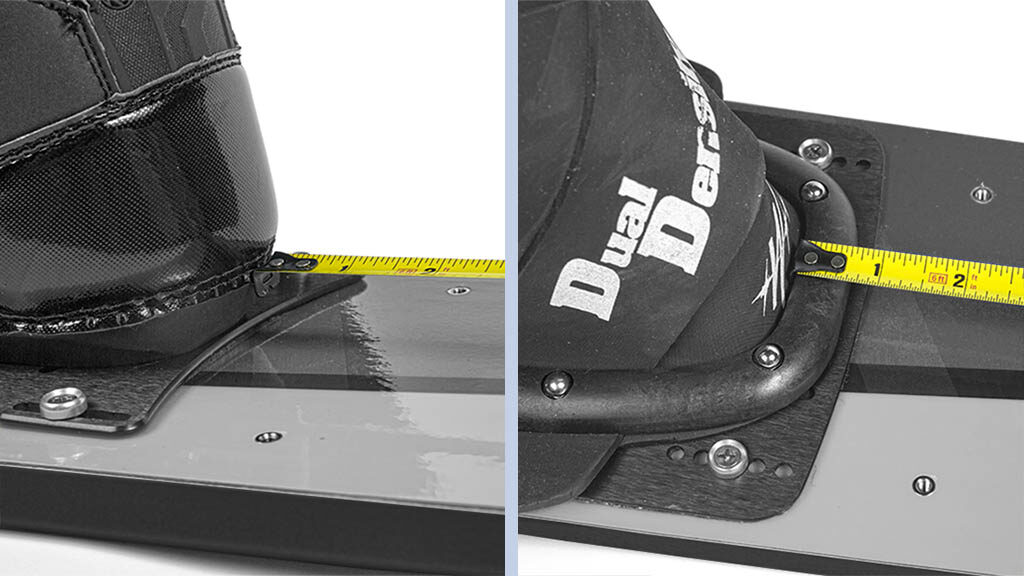Starting Setups
WhisperFin PRO
The measurements listed in this database were taken using these industry standard techniques
If you are using the original WhisperFin and love your setup, this calculator will convert your current settings into WhisperFin PRO settings that will maintain your ski’s balance while introducing PRO fin benefits. Then even if you are happy with your new setup, I encourage you to further explore the potential of your new fin by following the tuning guides that came with your fin.
Binding and Wing Settings
Binding and wing settings transfer unchanged from the original WhisperFin to the PRO fin.
| Original WhisperFin Settings | WhisperFin PRO Settings | ||
| FD | enter old FD | ||
| FL | enter old FL | ||
| DFT | enter old DFT |
V–1.2 (03.24.21): This algorithm may evolve for awhile.
Check back for possible updates.
Starting Setups
These setups are called “starting setups” because they are just that—good starting points from which to develop your own personalized setup. Keep in mind that while these setups worked great for someone, that “someone” may have bindings, technique and stature that are completely different than yours. So whether you start with the generic installation setup that came with your fin, or with one of the following model-specific setups, I still recommend you do a little custom tuning for best personal results. And custom tuning is probably easier than you think. Just follow the tuning instructions that came with your fin, or go to: www.finwhispering.com/whisperfin-tuning
Not every ski built will be listed in these Starting Setups. If your ski isn’t listed, you can start with the setup for another ski of a similar size and character to yours. And if there is a setup listed for your ski but not in your size, adjust the listed setup as follows:
- Move your bindings ½” for every inch of ski length difference (e.g. If the listed ski 1″ larger than yours, move your bindings forward ½”).
- Change DFT .005″ for every inch of ski length difference (e.g. If the listed ski 1″ larger than yours, increase DFT by .005″).
PRO Fin Starting Setups by Ski Brand
Connelly Installation Note:
With Connelly’s unique new fin block, the adjustment set screws contact the top sheet of the ski before you can achieve the desired FD and FL with the WhisperFin. This is not a problem. You can either adjust the fin by hand without the use of the set screws, Dremel out a round hole through the top sheet for the set screws to pass through (do not use a standard drill bit as it may snag and crack the top sheet). Or you can simply force the set screws through the top sheet into the foam core (this works fine and does no structural or cosmetic damage).
* Notice the significant difference between the 66″ and 67″ DFT measurements. The 67″ setup was for a 35-off skier who was struggling with too much tip-bite. This short DFT strategy will work to reduce tip-grab for any sized ski. And note that it’s not the short DFT that reduces tip-bite, it’s the short leading edge location (LE).
GT-R
PRO Fin Settings
65″
Nimble
Bf = 28.625
Wing = 8°
FD = 2.510
FL = 5.857
DFT = 1.843
LE = 7.700
66″
Supportive
Bf = 29.125
Wing = 8°
FD = 2.500
FL = 5.847
DFT = 1.798
LE = 7.645
67″
Anti Tip-grab
Bf = 29.625
Wing = 7°
FD = 2.500
FL = 5.847
DFT = 1.698 *
LE = 7.545**
*The front (FL) set screw must be removed to achieve this DFT
**This setup can be made nimbler by increasing DFT by up to .110″ or until the tip starts grabbing
68″
Carbon V
GT-R
PRO Fin Settings
65″
66″
67″
Supportive
Bf = 29.375
Wing = 7°
FD = 2.480
FL = 5.837
DFT = 1.773
LE = 7.610
68″
DV8
PRO Fin Settings
65″
66″
67″
Nimble
Bf = 29.375
Wing = 7°
FD = 2.500
FL = 5.849
DFT = 1.843
LE = 7.692
Supportive
Bf = 29.5
Wing = 7°
FD = 2.510
FL = 5.857
DFT = 1.813
LE = 7.670
Joel Howley
(extra support)
Bf = 29.5
Wing = 9°
FD = 2.525
FL = 5.868
DFT = 1.710
LE = 7.678
68″
Ion
Ion S/2
Evo
Arc
64″
Bf = 28.625
Wing = 7°
FD = 2.455
FL = 5.817
DFT = 1.838
LE = 7.655
65″
Bf = 29.25
Wing = 7°
FD = 2.490
FL = 5.842
DFT = 1.813
LE = 7.655
66″
Bf = 29.75
Wing = 7°
FD = 2.500
FL = 5.849
DFT = 1.813
LE = 7.662
67″
Bf = 30.125
Wing = 8°
FD = 2.500
FL = 5.847
DFT = 1.818
LE = 7.665
68″
Bf = 30.625
Wing = 7°
FD = 2.510
FL = 5.857
DFT = 1.813
LE = 7.670
NRG
64″
65″
66″
Bf = 29.65
Wing = 7°
FD = 2.495
FL = 5.847
DFT = 1.838
LE = 7.685
67″
Bf = 30.15
Wing = 7°
FD = 2.500
FL = 5.847
DFT = 1.848
LE = 7.695
68″
Bf = 30.65
Wing = 7°
FD = 2.500
FL = 5.847
DFT = 1.843
LE = 7.690
NRG R2
64″
65″
66″
Bf = 29.65
Wing = 7°
FD = 2.500
FL = 5.850
DFT = 1.838
LE = 7.688
67″
Bf = 30.15
Wing = 7°
FD = 2.505
FL = 5.854
DFT = 1.848
LE = 7.702
68″
Bf = 30.65
Wing = 7°
FD = 2.505
FL = 5.854
DFT = 1.850
LE = 7.704
Wing Note: The setups here all assume small wing use. But most, if not all, of the current Goodes work best with the large wing run at 1.5° less angle than your normal small wing setting.
Note: These measurements are with the tips (FL) and head (DFT) of a normal caliper, not a slot caliper. FL measurements are very roughly .075″ shorter and DFT measurements about .010″ longer using a slot caliper, but these conversions vary widely depending on ski design.
RéVo CC
65.75″
66.5″
Bf = 29.5
Wing = 9°
FD = 2.500
FL = 5.850
DFT = 1.723
LE = 7.573
67.25″
Bf = 29.625
Wing = 9°
FD = 2.500
FL = 5.850
DFT = 1.723
LE = 7.573
68″
Bf = 29.875
Wing = 9.5°
FD = 2.500
FL = 5.845
DFT = 1.733
LE = 7.578
9970 CC
65.5″
Bf = 29.5
Wing = 9° Large
FD = 2.500
FL = 5.849
DFT = 1.703
LE = 7.552
67″
Bf = 29.625
Wing = 9.5° Large
FD = 2.500
FL = 5.849
DFT = 1.703
LE = 7.552
67.75″
Bf = 29.5
Wing = 9.5° Large
FD = 2.495
FL = 5.845
DFT = 1.743
LE = 7.588
68.5″
Bf = 29.875
Wing = 9° Large
FD = 2.495
FL = 5.847
DFT = 1.773
LE = 7.620
This setup is a good estimate
XTR CC
Nano 1 XTR
65″
66″
Aggressive
Bf = 28.875
Wing = 9.5°
FD = 2.500
FL = 5.847
DFT = 1.753
LE = 7.600
Less Tip-bite
Bf = 28.875
Wing = 9.5°
FD = 2.500
FL = 5.847
DFT = 1.703
LE = 7.550
67″
Aggressive
Bf = 29.125
Wing = 9°
FD = 2.500
FL = 5.852
DFT = 1.758
LE = 7.610
Less Tip-bite
Bf = 29.125
Wing = 9°
FD = 2.500
FL = 5.852
DFT = 1.713
LE = 7.565
68″
Aggressive
Bf = 29.375
Wing = 9.5°
FD = 2.510
FL = 5.857
DFT = 1.763
LE = 7.620
Less Tip-bite
Bf = 29.375
Wing = 9.5°
FD = 2.510
FL = 5.857
DFT = 1.713
LE = 7.570
RéVolution
65.75″
66.5″
Bf = 29.25
Wing = 9°
FD = 2.500
FL = 5.852
DFT = 1.828
LE = 7.680
Excellent tip hold out of turns, but if you experience tip-grab, shorten LE
67.25″
Bf = 29.500
Wing = 9°
FD = 2.500
FL = 5.852
DFT = 1.733
LE = 7.585
Set up to defend against tip-bite from tip-high approach to turns
68″
Bf = 29.625
Wing = 9°
FD = 2.510
FL = 5.852
DFT = 1.773
LE = 7.625
An accomplished Big Dawg’s setup
Nano 1 XT
Nano 1
64″
65.25″
Aggressive
Bf (N1) = 28.875
Bf (XT) = 28.875
Wing = 9.5°
FD = 2.500
FL = 5.847
DFT = 1.753
LE = 7.600
Less Tip-bite
Bf (N1) = 28.875
Bf (XT) = 28.875
Wing = 9.5°
FD = 2.500
FL = 5.847
DFT = 1.703
LE = 7.550
66″
Aggressive
Bf (N1) = 29
Bf (XT) = 29
Wing = 9°
FD = 2.500
FL = 5.852
DFT = 1.758
LE = 7.610
Less Tip-bite
Bf (N1) = 29
Bf (XT) = 29
Wing = 9°
FD = 2.500
FL = 5.852
DFT = 1.713
LE = 7.565
66.75″
Aggressive
Bf (N1) = 29.375
Bf (XT) = 29.125
Wing = 9°
FD = 2.510
FL = 5.857
DFT = 1.763
LE = 7.620
Less Tip-bite
Bf (N1) = 29.375
Bf (XT) = 29.125
Wing = 9°
FD = 2.510
FL = 5.857
DFT = 1.713
LE = 7.570
Rev 6
64.25″
65.75″
Bf = 28.75
Wing = 9°
FD = 2.505
FL = 5.852
DFT = 1.803
LE = 7.655
66.5″
Bf = 29
Wing = 9°
FD = 2.510
FL = 5.857
DFT = 1.783
LE = 7.640
67.25″
68″
9700
64″
65.5″
66.25″
Bf = 29.625
Wing = 9° Large
FD = 2.510
FL = 5.857
DFT = 1.778
LE = 7.635
67″
Works 1
Medium
Bf = 29.75
Wing = 8°
FD = 2.450
FL = 5.813
DFT = 1.907
LE = 7.720
Large
Bf = 30.25
Wing = 8°
FD = 2.450
FL = 5.813
DFT = 1.917
LE = 7.730
XL
Bf = 30.75
Wing = 8°
FD = 2.450
FL = 5.813
DFT = 1.927
LE = 7.740
Works 2
Medium
Bf = 29.75
Wing = 9°
FD = 2.445
FL = 5.809
DFT = 1.831
LE = 7.640
Large
Bf = 30.25
Wing = 9°
FD = 2.445
FL = 5.809
DFT = 1.841
LE = 7.650
XL
Bf = 30.75
Wing = 9°
FD = 2.445
FL = 5.809
DFT = 1.851
LE = 7.660
VTX & Pro
65″
66″
Bf = 28 ⅞
Wing = 8°
FD = 2.450
FL = 5.812
DFT = 1.873
LE = 7.685
67″
Bf = 28.75
Wing = 8°
FD = 2.450
FL = 5.812
DFT = 1.878
LE = 7.690
68″
Bf = 29.25
Wing = 8°
FD = 2.450
FL = 5.812
DFT = 1.883
LE = 7.695
Platinum
65″
Nimble
Bf = 28.625
Wing = 8°
FD = 2.470
FL = 5.827
DFT = 1.813
LE = 7.640
More Supportive
Bf = 28.625
Wing = 8°
FD = 2.485
FL = 5.837
DFT = 1.808
LE = 7.645
66″
Nimble
Bf = 29.125
Wing = 8°
FD = 2.480
FL = 5.837
DFT = 1.823
LE = 7.660
More Supportive
Bf = 29.25
Wing = 8°
FD = 2.510
FL = 5.857
DFT = 1.793
LE = 7.650
67″
Nimble
Bf = 29.625
Wing = 8°
FD = 2.465
FL = 5.824
DFT = 1.786*
LE = 7.610
* Lengthen DFT until tip grabs
More Supportive
Bf = 29.75
Wing = 8°
FD = 2.500
FL = 5.847
DFT = 1.808
LE = 7.655
For more customized tuning guidance see: WhisperFin Ski-tuning –101 and the Whisperfin Ski-tuning Flowchart
LP1
66″
Bf = 29.25
Wing = 7°
FD = 2.505
FL = 5.853
DFT = 1.840
LE = 7.693
67″
Bf = 29.75
Wing = 8°
FD = 2.510
FL = 5.858
DFT = 1.842
LE = 7.700
68″
Bf = 30.25
Wing = 8°
FD = 2.510
FL = 5.858
DFT = 1.852
LE = 7.710
Nimble – Start with these settings if you are light, or consider yourself a finesse skier. The more nimble your setup can be, the better the tip hold will be exiting turns and during the cut. Your setup is too nimble if the tail feels slippery at the end of turns.
More Supportive – Start with these settings if you consider yourself a powerful skier who tends to force the ski, if you tend to get tip-grab, or if the nimble settings make the tail feel too slippery.
These two setups are NOT at extreme ends of the setup spectrum. If anything, they bracket the middle third. So experimenting with either of these setups is encouraged. If you want more or less tail grip make the fin deeper or shallower. And it’s always a good idea to customize yawing tip-engagement by moving the fin back and forth (forward for more tip engagement and back for less). You want to be as far forward as your technique will allow before the tip starts grabbing occasionally.
For more customized tuning guidance see: WhisperFin Ski-tuning –101 and the Whisperfin Ski-tuning Flowchart
Vapor
2024
65″
Bf = 29.25
Wing = 8°
FD = 2.480
FL = 5.832
DFT = 1.793
LE = 7.625
66″
Nimble
Bf = 29.625
Wing = 9°
FD = 2.485
FL = 5.839
DFT = 1.796
LE = 7.635
More Stable
Bf = 29.75
Wing = 9°
FD = 2.510
FL = 5.857
DFT = 1.763
LE = 7.620
67″
Nimble
Bf = 30.125
Wing = 9°
FD = 2.480
FL = 5.839
DFT = 1.801
LE = 7.640
More Stable
Bf = 30.25
Wing = 9°
FD = 2.510
FL = 5.858
DFT = 1.767
LE = 7.625
68″
Nimble
Bf = 30.75
Wing = 9°
FD = 2.500
FL = 5.839
DFT = 1.811
LE = 7.650
More Stable
Bf = 30.875
Wing = 9°
FD = 2.500
FL = 5.850
DFT = 1.785
LE = 7.635
Vapor
For 2022 model, start with the “Nimble” setup
63.5″
Bf = 28.625
Wing = 8°
FD = 2.410
FL = 5.782
DFT = 1.863
LE = 7.645
69.5″
Bf = 31.125
Wing = 8°
FD = 2.490
FL = 5.842
DFT = 1.843
LE = 7.685
65″
Bf = 29.25
Wing = 9°
FD = 2.480
FL = 5.827
DFT = 1.843
LE = 7.670
66″
Nimble
Bf = 29.625
Wing = 9°
FD = 2.480
FL = 5.832
DFT = 1.853
LE = 7.685
More Stable
Bf = 29.75
Wing = 9°
FD = 2.510
FL = 5.857
DFT = 1.813
LE = 7.670
67″
Nimble
Bf = 30.125
Wing = 9°
FD = 2.480
FL = 5.832
DFT = 1.850
LE = 7.682
More Stable
Bf = 30.25
Wing = 9°
FD = 2.500
FL = 5.847
DFT = 1.828
LE = 7.675
68″
Nimble
Bf = 30.75
Wing = 9°
FD = 2.480
FL = 5.837
DFT = 1.863
LE = 7.700
More Stable
Bf = 30.875
Wing = 9°
FD = 2.500
FL = 5.852
DFT = 1.833
LE = 7.685
Senate
65″
Bf = 29.625
Wing = 8°
FD = 2.480
FL = 5.817
DFT = 1.888
LE = 7.705
67″
Bf = 30.75
Wing = 8°
FD = 2.480
FL = 5.837
DFT = 1.853
LE = 7.690
69″
Nimble
Bf = 32.0
Wing = 8°
FD = 2.480
FL = 5.835
DFT = 1.865
LE = 7.700
More Stable
Bf = 32.0
Wing = 8°
FD = 2.495
FL = 5.847
DFT = 1.838
LE = 7.685
71″
Bf = 32.5
Wing = 8°
FD = 2.490
FL = 5.842
DFT = 1.838
LE = 7.680
Not Finding Your Ski?
Awhile ago, I had a serious snow skiing accident that put an end to both my snow and water skiing. As a result, you’ll notice the starting setups listed above only only cover skis until 2021. But these listings are still helpful.
If you choose a setup for a ski that is similar in nature to your latest ride, it will likely get you surprisingly close to ideal. From there, I encourage you to experiment with changes using the following tools as your guide. Worst case, you can always change back; but if you dare to try, you just might find you can make your ski’s behavior friendlier and friendlier.

